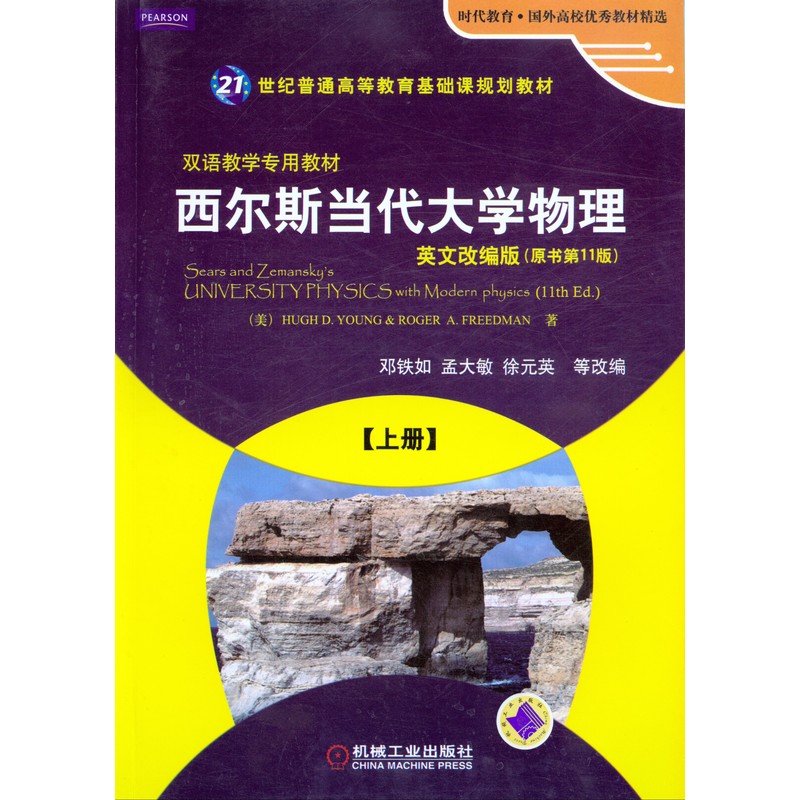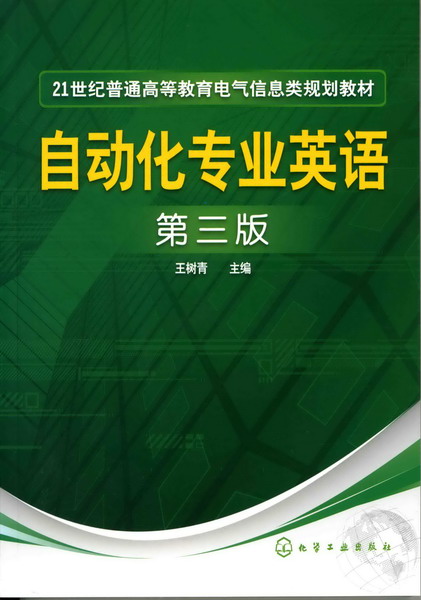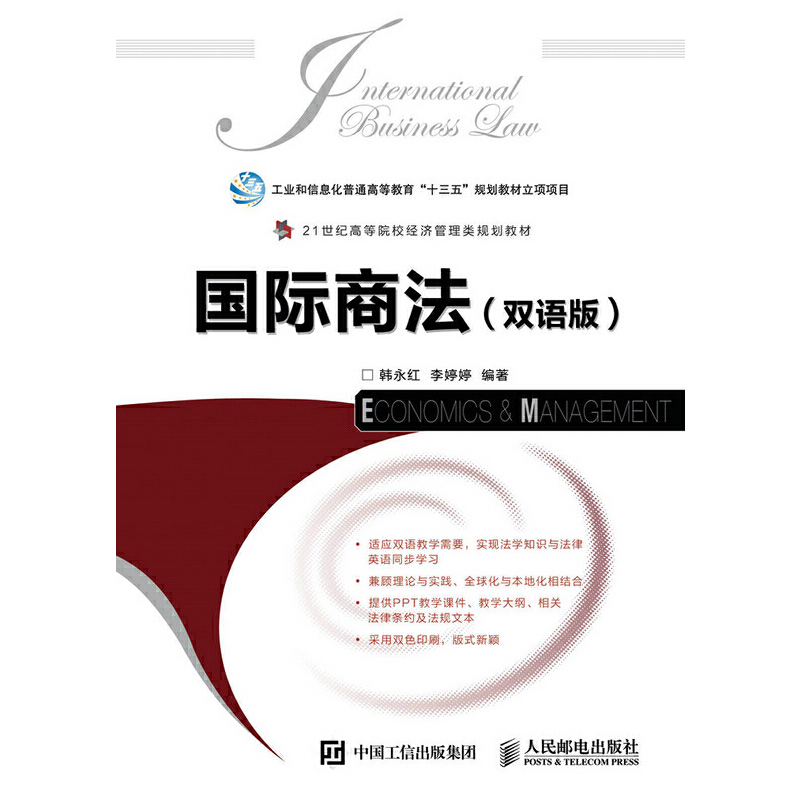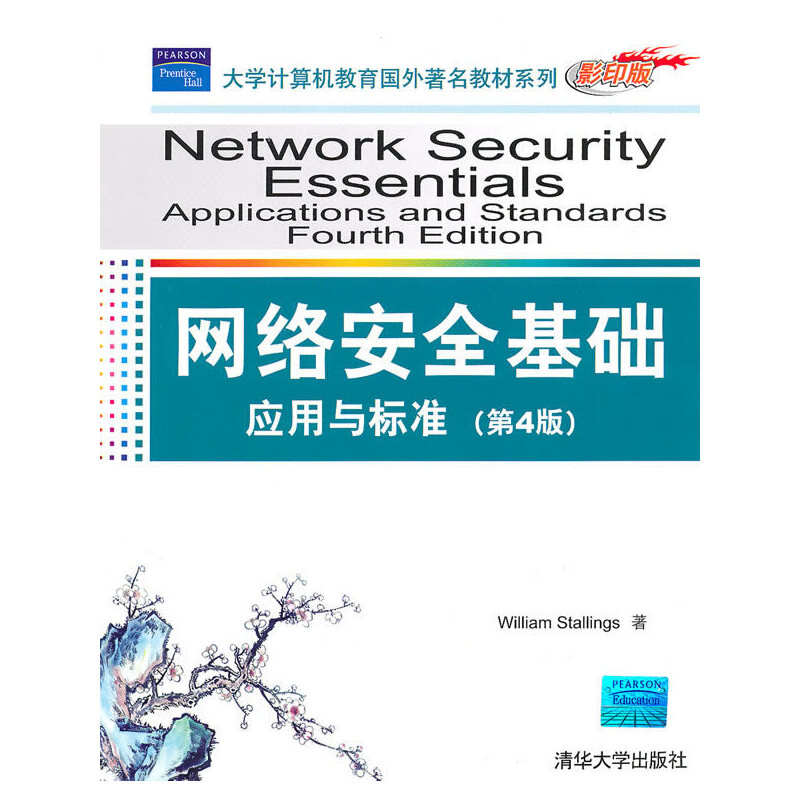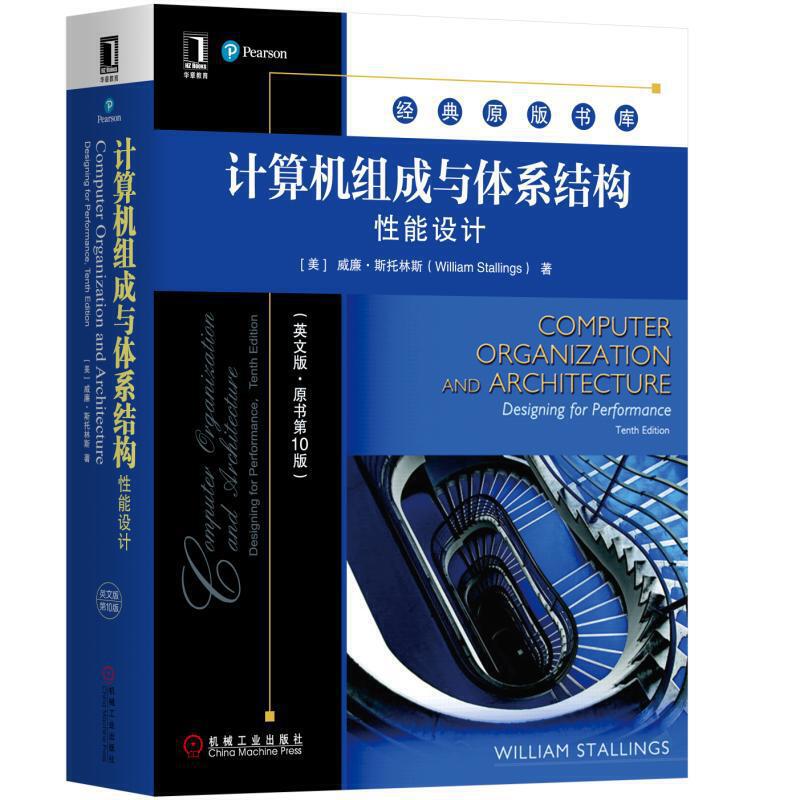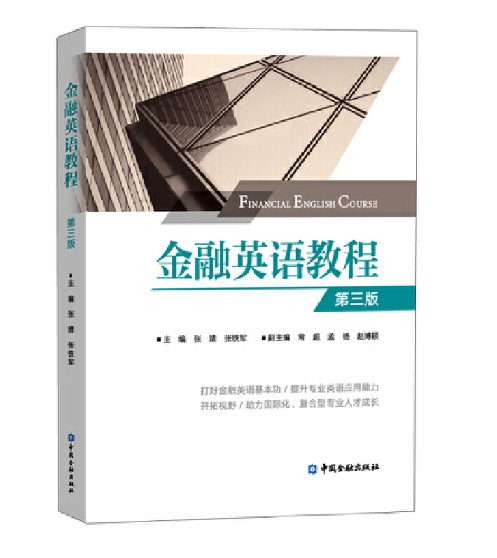- 机械工业出版社
- 9787111275336
- 1-5
- 172691
- 44251917-9
- 平装
- 16开
- 2017-12
- 688
- 400
- 理学
- 物理学
- O4
- 大学物理
- 本科
内容简介
本英文改编教材的原书——《西尔斯物理学》是几代编著者长达半个多世纪物理教育探索与创新的产物,其许多可圈可点的特色在美国乃至世界其他国家,影响了一代又一代的大学师生,是当今世界发行量大的主流教材之一。
本教材分上下两册。本书是上册,主要内容有力学、热学、电磁学等。
本书既充分体现了原书的特色,又在适合我国国情方面有了新的特点,主要表现在:对原书取舍得当,篇幅适当,教材内容覆盖了教育部新教学基本要求建议的75个A类知识点和部分B类知识点;教材95%以上是原书的文字,体现了原书教学理念的精华,整个教材体系具有更好的系统性和完整性;内容生动、丰富,图文并茂,举例鲜活,趣味性强,联系实际密切,强调概念理解,注重能力培养;每章的问题引入法、正文探索式的叙述法以及每节的思考题检测法等多种教学方法并用,将有效调动学生学习的积极性,提高学生学习的效能;所有例题都采用四步解题法:审题(Identify)、破题(Set up)、求解(Excute)和讨论(Evaluate),这种规范、科学的解题方式十分有利于学生形成思维清晰、表述准确、方法明确的解题习惯,并能逐步获得较强的解决实际问题的能力;英语行文规范、流畅,原汁原味,代表了当前科技英语文献的风格,是我国学生学习英文科技写作的极好范本。
本教材为高等学校理工科各专业学生的大学物理双语教学专用教材。由于与国内教材有很强的相关对应性,故对于希望了解物理知识英文表述的非双语教学的师生及其他科技工作者,本书也是一本十分有益的参考书。
本教材分上下两册。本书是上册,主要内容有力学、热学、电磁学等。
本书既充分体现了原书的特色,又在适合我国国情方面有了新的特点,主要表现在:对原书取舍得当,篇幅适当,教材内容覆盖了教育部新教学基本要求建议的75个A类知识点和部分B类知识点;教材95%以上是原书的文字,体现了原书教学理念的精华,整个教材体系具有更好的系统性和完整性;内容生动、丰富,图文并茂,举例鲜活,趣味性强,联系实际密切,强调概念理解,注重能力培养;每章的问题引入法、正文探索式的叙述法以及每节的思考题检测法等多种教学方法并用,将有效调动学生学习的积极性,提高学生学习的效能;所有例题都采用四步解题法:审题(Identify)、破题(Set up)、求解(Excute)和讨论(Evaluate),这种规范、科学的解题方式十分有利于学生形成思维清晰、表述准确、方法明确的解题习惯,并能逐步获得较强的解决实际问题的能力;英语行文规范、流畅,原汁原味,代表了当前科技英语文献的风格,是我国学生学习英文科技写作的极好范本。
本教材为高等学校理工科各专业学生的大学物理双语教学专用教材。由于与国内教材有很强的相关对应性,故对于希望了解物理知识英文表述的非双语教学的师生及其他科技工作者,本书也是一本十分有益的参考书。
目录
CONTENTS
Preface
1 PHYSICAL QUANTITIES AND
VECTORS1
1.1 The Nature of Physics2
1.2 Idealized Models2
1.3 Standards and Units3
1.4 Uncertainty and Significant Figures5
1.5 Vectors and Scalars6
1.6 Vector Algebra7
1.7 Unit Vectors and Component
Expression9
Answer to Chapter Opening Question11
Exercises11
2 KINEMATICS12
2.1 Particle Kinematics12
2.2 Position Vector and Displacement12
2.3 Velocity and Acceleration13
2.4 Rectilinear Motion14
2.5 Two Fundamental Problems in
Kinematics15
2.6 Relative Motion17
Answer to Chapter Opening Question18
Exercises18
3 DYNAMICS19
3.1 Particle Dynamics19
3.2 Newton’s Laws19
3.3 Understanding Forces20
3.4 Dynamics of Circular Motion21
3.5 Noninertial Frame and Inertial
Forces23
Answer to Chapter Opening Question24
Exercises24
4 WORK AND ENERGY26
4.1 Kinetic Energy and Work26
4.2 Calculating the Work27
4.3 Path Independence of Conservative
Forces29
4.4 Potential Energy29
4.5 Conservation of Mechanical
Energy30
4.6 Find the Conservative Force from
Potential Energy31
Answer to Chapter Opening Question32
Exercises32
5 MOMENTUM AND IMPULSE34
5.1 Definition of Momentum34
5.2 Conservation of Momentum35
5.3 Impulse35
5.4 Collisions36
5.5 Center of Mass40
5.6 Rocket Propulsion41
5.7 ProblemSolving Strategy ISEE42
Answer to Chapter Opening Question43
Exercises43
6 ROTATION OF RIGID BODIES45
6.1 Angular Velocity and Acceleration46
6.2 Rotation with Constant Angular
Acceleration51
6.3 Relating Linear and Angular
Kinematics53
6.4 Energy in Rotational Motion57
6.5 ParallelAxis Theorem63
6.6 Moment of Inertia Calculations65
Answer to Chapter Opening Question68
Answers to Test Your Understanding
Questions68
Exercises68
7 DYNAMICS OF ROTATIONAL
MOTION71
7.1 Torque72
7.2 Torque and Angular Acceleration for
a Rigid Body75
7.3 RigidBody Rotation About a Moving
Axis81
7.4 Work and Power in Rotational
Motion89
7.5 Angular Momentum91
7.6 Conservation of Angular
Momentum94
7.7 Gyroscopes and Precession98
Answer to Chapter Opening Question102
Answers to Test Your Understanding
Questions102
Exercises102
8 PERIODIC MOTION106
8.1 Describing Oscillation107
8.2 Simple Harmonic Motion109
8.3 Energy in Simple Harmonic
Motion116
8.4 Applications of Simple Harmonic
Motion121
8.5 The Simple Pendulum125
8.6 The Physical Pendulum127
8.7 Damped Oscillations129
8.8 Forced Oscillations and
Resonance132
Answer to Chapter Opening Question134
Answers to Test Your Understanding
Questions134
Exercises135
9 MECHANICAL WAVES137
9.1 Types of Mechanical Waves138
9.2 Periodic Waves139
9.3 Mathematical Description of a
Wave142
9.4 Energy in Wave Motion148
9.5 Wave Interference,Boundary
Conditions and Superposition151
9.6 Standing Waves on a String154
9.7 Normal Modes of a String159
9.8 Beats164
9.9 The Doppler Effect165
Answer to Chapter Opening Question172
Answers to Test Your Understanding
Questions172
Exercises172
10 TEMPERATURE AND HEAT175
10.1 Temperature and Thermal
Equilibrium176
10.2 Thermometers and Temperature
Scales177
10.3 Gas Thermometers and the Kelvin
Scale179
10.4 Quantity of Heat181
10.5 Calorimetry and Phase Changes186
10.6 Mechanisms of Heat Transfer192
Answer to Chapter Opening Question197
Answers to Test Your Understanding
Questions197
Exercises197
11 THERMAL PROPERTIES OF
MATTER199
11.1 Equations of State200
11.2 Molecular Properties of Matter204
11.3 KineticMolecular Model of an Ideal
Gas207
11.4 Heat Capacities215
11.5 Molecular Speeds219
Answer to Chapter Opening Question222
Answers to Test Your Understanding
Qestions223
Exercises223
12 THE FIRST LAW OF
THERMODYNAMICS225
12.1 Thermodynamic Systems226
12.2 Work Done During Volume
Changes228
12.3 Paths Between Thermodynamic
States230
12.4 Internal Energy and the First Law of
Thermodynamics232
12.5 Kinds of Thermodynamic
Processes238
12.6 Internal Energy of an Ideal Gas240
12.7 Heat Capacities of an Ideal Gas241
12.8 Adiabatic Processes for an Ideal
Gas244
Answer to Chapter Opening Question247
Answers to Test Your Understanding
Questions247
Exercises248
13 THE SECOND LAW OF
THERMODYNAMICS250
13.1 Directions of Thermodynamic
Processes251
13.2 Heat Engines252
13.3 Refrigerators255
13.4 The Second Law of
Thermodynamics257
13.5 The Carnot Cycle259
13.6 Entropy266
13.7 Microscopic Interpretation of
Entropy273
Answer to Chapter Opening Question276
Answers to Test Your Understanding
Questions276
Exercises276
14 ELECTRIC CHARGE AND ELECTRIC
FIELD278
14.1 Electric Charge279
14.2 Conductors,Insulators and Induced
Charges283
14.3 Coulomb’s Law286
14.4 Electric Field and Electric
Forces291
14.5 Electric Field Calculations298
14.6 Electric Field Lines305
14.7 Electric Dipoles307
Answer to Chapter Opening Question311
Answers to Test Your Understanding
Questions311
Exercises312
15 GAUSS’S LAW315
15.1 Charge and Electric Flux316
15.2 Calculating Electric Flux319
15.3 Gauss’s Law323
15.4 Applications of Gauss’s Law328
15.5 Charges on Conductors336
Answer to Chapter Opening Question341
Answers to Test Your Understanding
Questions341
Exercises341
16 ELECTRIC POTENTIAL345
16.1 Electric Potential Energy346
16.2 Electric Potential354
16.3 Calculating Electric Potential361
16.4 Equipotential Surfaces366
16.5 Potential Gradient369
Answer to Chapter Opening Question372
Answers to Test Your Understanding
Questions372
Exercises372
17 CAPACITANCE AND
DIELECTRICS375
17.1 Capacitors and Capacitance376
17.2 Energy Storage in Capacitors and
ElectricField Energy381
17.3 Dielectrics385
17.4 Molecular Model of Induced
Charge392
17.5 Gauss’s Law In Dielectrics394
Answer to Chapter Opening Question396
Answers to Test Your Understanding
Questions396
Exercises396
18 CURRENT, RESISTANCE AND
ELECTROMOTIVE FORCE399
18.1 Current400
18.2 Resistivity404
18.3 Resistance407
18.4 Electromotive Force and Internal
Resistance411
18.5 Theory of Metallic Conduction415
Answer to Chapter Opening Question417
Answers to Test Your Understanding
Questions417
Exercises418
APPENDICES420
Appendix A The International System of
Units420
Appendix B Useful Mathematical
Relations422
Appendix C The Greek Alphabet423
Appendix D Periodic Table of the
Elements424
Appendix E Unit Conversion Factors424
Appendix F Numerical Constants425
Appendix G Answers to Exercises427
教学支持信息表(填写本表,获取本书
教辅资源)434
Preface
1 PHYSICAL QUANTITIES AND
VECTORS1
1.1 The Nature of Physics2
1.2 Idealized Models2
1.3 Standards and Units3
1.4 Uncertainty and Significant Figures5
1.5 Vectors and Scalars6
1.6 Vector Algebra7
1.7 Unit Vectors and Component
Expression9
Answer to Chapter Opening Question11
Exercises11
2 KINEMATICS12
2.1 Particle Kinematics12
2.2 Position Vector and Displacement12
2.3 Velocity and Acceleration13
2.4 Rectilinear Motion14
2.5 Two Fundamental Problems in
Kinematics15
2.6 Relative Motion17
Answer to Chapter Opening Question18
Exercises18
3 DYNAMICS19
3.1 Particle Dynamics19
3.2 Newton’s Laws19
3.3 Understanding Forces20
3.4 Dynamics of Circular Motion21
3.5 Noninertial Frame and Inertial
Forces23
Answer to Chapter Opening Question24
Exercises24
4 WORK AND ENERGY26
4.1 Kinetic Energy and Work26
4.2 Calculating the Work27
4.3 Path Independence of Conservative
Forces29
4.4 Potential Energy29
4.5 Conservation of Mechanical
Energy30
4.6 Find the Conservative Force from
Potential Energy31
Answer to Chapter Opening Question32
Exercises32
5 MOMENTUM AND IMPULSE34
5.1 Definition of Momentum34
5.2 Conservation of Momentum35
5.3 Impulse35
5.4 Collisions36
5.5 Center of Mass40
5.6 Rocket Propulsion41
5.7 ProblemSolving Strategy ISEE42
Answer to Chapter Opening Question43
Exercises43
6 ROTATION OF RIGID BODIES45
6.1 Angular Velocity and Acceleration46
6.2 Rotation with Constant Angular
Acceleration51
6.3 Relating Linear and Angular
Kinematics53
6.4 Energy in Rotational Motion57
6.5 ParallelAxis Theorem63
6.6 Moment of Inertia Calculations65
Answer to Chapter Opening Question68
Answers to Test Your Understanding
Questions68
Exercises68
7 DYNAMICS OF ROTATIONAL
MOTION71
7.1 Torque72
7.2 Torque and Angular Acceleration for
a Rigid Body75
7.3 RigidBody Rotation About a Moving
Axis81
7.4 Work and Power in Rotational
Motion89
7.5 Angular Momentum91
7.6 Conservation of Angular
Momentum94
7.7 Gyroscopes and Precession98
Answer to Chapter Opening Question102
Answers to Test Your Understanding
Questions102
Exercises102
8 PERIODIC MOTION106
8.1 Describing Oscillation107
8.2 Simple Harmonic Motion109
8.3 Energy in Simple Harmonic
Motion116
8.4 Applications of Simple Harmonic
Motion121
8.5 The Simple Pendulum125
8.6 The Physical Pendulum127
8.7 Damped Oscillations129
8.8 Forced Oscillations and
Resonance132
Answer to Chapter Opening Question134
Answers to Test Your Understanding
Questions134
Exercises135
9 MECHANICAL WAVES137
9.1 Types of Mechanical Waves138
9.2 Periodic Waves139
9.3 Mathematical Description of a
Wave142
9.4 Energy in Wave Motion148
9.5 Wave Interference,Boundary
Conditions and Superposition151
9.6 Standing Waves on a String154
9.7 Normal Modes of a String159
9.8 Beats164
9.9 The Doppler Effect165
Answer to Chapter Opening Question172
Answers to Test Your Understanding
Questions172
Exercises172
10 TEMPERATURE AND HEAT175
10.1 Temperature and Thermal
Equilibrium176
10.2 Thermometers and Temperature
Scales177
10.3 Gas Thermometers and the Kelvin
Scale179
10.4 Quantity of Heat181
10.5 Calorimetry and Phase Changes186
10.6 Mechanisms of Heat Transfer192
Answer to Chapter Opening Question197
Answers to Test Your Understanding
Questions197
Exercises197
11 THERMAL PROPERTIES OF
MATTER199
11.1 Equations of State200
11.2 Molecular Properties of Matter204
11.3 KineticMolecular Model of an Ideal
Gas207
11.4 Heat Capacities215
11.5 Molecular Speeds219
Answer to Chapter Opening Question222
Answers to Test Your Understanding
Qestions223
Exercises223
12 THE FIRST LAW OF
THERMODYNAMICS225
12.1 Thermodynamic Systems226
12.2 Work Done During Volume
Changes228
12.3 Paths Between Thermodynamic
States230
12.4 Internal Energy and the First Law of
Thermodynamics232
12.5 Kinds of Thermodynamic
Processes238
12.6 Internal Energy of an Ideal Gas240
12.7 Heat Capacities of an Ideal Gas241
12.8 Adiabatic Processes for an Ideal
Gas244
Answer to Chapter Opening Question247
Answers to Test Your Understanding
Questions247
Exercises248
13 THE SECOND LAW OF
THERMODYNAMICS250
13.1 Directions of Thermodynamic
Processes251
13.2 Heat Engines252
13.3 Refrigerators255
13.4 The Second Law of
Thermodynamics257
13.5 The Carnot Cycle259
13.6 Entropy266
13.7 Microscopic Interpretation of
Entropy273
Answer to Chapter Opening Question276
Answers to Test Your Understanding
Questions276
Exercises276
14 ELECTRIC CHARGE AND ELECTRIC
FIELD278
14.1 Electric Charge279
14.2 Conductors,Insulators and Induced
Charges283
14.3 Coulomb’s Law286
14.4 Electric Field and Electric
Forces291
14.5 Electric Field Calculations298
14.6 Electric Field Lines305
14.7 Electric Dipoles307
Answer to Chapter Opening Question311
Answers to Test Your Understanding
Questions311
Exercises312
15 GAUSS’S LAW315
15.1 Charge and Electric Flux316
15.2 Calculating Electric Flux319
15.3 Gauss’s Law323
15.4 Applications of Gauss’s Law328
15.5 Charges on Conductors336
Answer to Chapter Opening Question341
Answers to Test Your Understanding
Questions341
Exercises341
16 ELECTRIC POTENTIAL345
16.1 Electric Potential Energy346
16.2 Electric Potential354
16.3 Calculating Electric Potential361
16.4 Equipotential Surfaces366
16.5 Potential Gradient369
Answer to Chapter Opening Question372
Answers to Test Your Understanding
Questions372
Exercises372
17 CAPACITANCE AND
DIELECTRICS375
17.1 Capacitors and Capacitance376
17.2 Energy Storage in Capacitors and
ElectricField Energy381
17.3 Dielectrics385
17.4 Molecular Model of Induced
Charge392
17.5 Gauss’s Law In Dielectrics394
Answer to Chapter Opening Question396
Answers to Test Your Understanding
Questions396
Exercises396
18 CURRENT, RESISTANCE AND
ELECTROMOTIVE FORCE399
18.1 Current400
18.2 Resistivity404
18.3 Resistance407
18.4 Electromotive Force and Internal
Resistance411
18.5 Theory of Metallic Conduction415
Answer to Chapter Opening Question417
Answers to Test Your Understanding
Questions417
Exercises418
APPENDICES420
Appendix A The International System of
Units420
Appendix B Useful Mathematical
Relations422
Appendix C The Greek Alphabet423
Appendix D Periodic Table of the
Elements424
Appendix E Unit Conversion Factors424
Appendix F Numerical Constants425
Appendix G Answers to Exercises427
教学支持信息表(填写本表,获取本书
教辅资源)434

